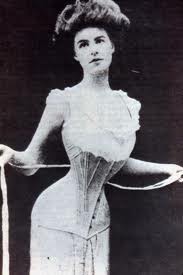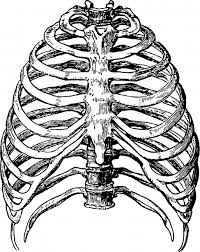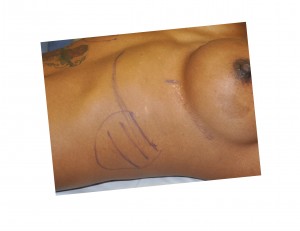
To achieve that waistline look, many devices and garments have been used. Corsets and other constricting garments can most effectively achieve waistline narrowing although their use is anything but comfortable. But before modern day surgery this was the only option.
Many body plastic surgery procedures when done in combination, such as breast augmentation and abdominal liposuction and tummy tucks, definitely have a waistline narrowing effect through their dual diametric body changes. For most women this is sufficient but for those seeking a more extreme approach to a a more shapely waistline, rib removal can be considered.
The concept of rib removal for waistline narrowing has become a bit of an urban myth. Some claim that surgical ribcage narrowing has been around since the Victorian era. However, without anesthesia, such a surgical endeavor at that time seems implausible. The ‘myth’ of rib removal for body shaping re-emerged in the early 1900s for actresses and, although there is no actual documentation of it every actually occurring, it may well have in a few isolated instances. (the first liposuction case did occur at that time)
Cosmetic rib removal was heard from again in the 70s when Cher was rumored to have had the surgery. (although this has since been discounted) Since then a few other celebrities have been said to have had ribs removed for a variety of body contouring purposes. But whether such surgeries have ever been done does not change the fact that it is a very rare cosmetic procedure and few plastic surgeons have ever performed it. Its rarity is evidenced by the lack of even a single publication of the procedure in the medical literature.
Therefore, is rib removal for waistline narrowing fact or fiction? That answer lies in understanding the anatomy of the ribcage and its effect on the waistline. The ribcage is a bony and cartilaginous structure that surrounds the vital organs of the thoracic cavity and the upper abdominal cavity. The ribcage consists of 24 ribs, the sternum with the xiphoid process, costal cartilages, and the 12 thoracic vertebrae. The ribcage is a vital component of the human respiratory system. Inhalation occurs with the diaphragm contracts and flattens while the intercostal muscles lift the ribcage up and out, thereby increasing the anteroposterior and transverse diameter of the thoracic cavity in order to allow expansion of the lungs.

There are innumerable diagrams and pictures of ribcage anatomy but most are inaccurate when the details of the lower rib cage are shown. In my extensive surgical experience harvesting ribs for a variety of purposes, I would certainly not call the the 8th rib a false rib as it is firmly attached to the cartilaginous confluence of ribs 6 and 7. The 9th rib is very loosely attached to the 8th by fibrous tissue and you can feel that on most people by flipping the 9th rib back and forth over the 8th with your fingers. It is almost as long as the 8th rib and courses along most of its inferior border towards the sternum. The 10th rib is a true floating rib as it ends in ‘space’ with no attachments at its anterior tip and stops at about the anterior axillary line. The 11th and 12th ribs are just like the 10th but they fail to make it around the curve of the ribcage.
The goal of ribcage narrowing is to make the waistline vertically longer and narrower from the sides by removing the bulge of the ribs. This is different than low waistline narrowing in circumference above the hip bones as many people envision. Although it is commonly thought that ribcage narrowing involves removal of the 11th and 12th ribs, these floating ribs are located more in your back and will not have any significant effect on bringing in the upper waistline.

The risks and complications of rib cage narrowing include a permanent subcostal scar and prolonged discomfort at the resection site. It is identical to any traditional rib harvest site for ear and mandibular reconstructive surgery with the exception that it is two sides and not just one. The discomfort from ribcage narrowing may take up to four to six weeks to completely subside.
Dr. Barry Eppley
Dr. Jane Namkung


